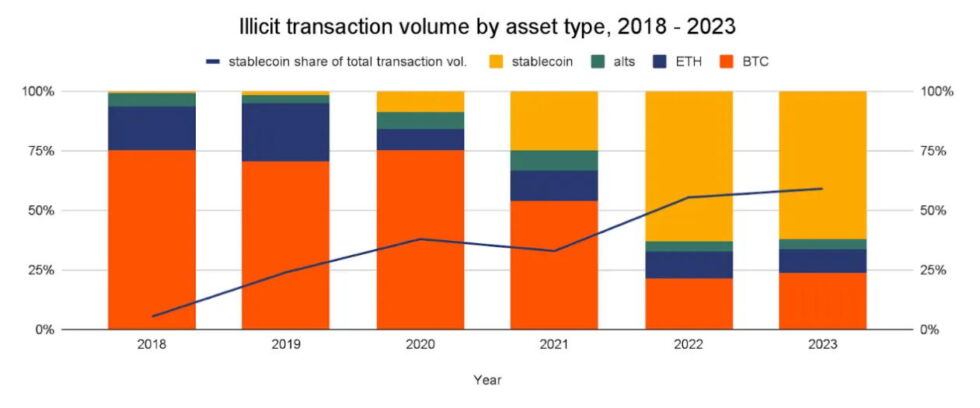
reader comments
61
Stablecoins, cryptocurrencies pegged to a stable value like the US dollar, were created with the promise of bringing the frictionless, border-crossing fluidity of bitcoin to a form of digital money with far less volatility. That combination has proved to be wildly popular, rocketing the total value of stablecoin transactions since 2022 past even that of Bitcoin itself.
It turns out, however, that as stablecoins have become popular among legitimate users over the past two years, they were even more popular among a different kind of user: those exploiting them for billions of dollars of international sanctions evasion and scams.

As part of its annual crime report, cryptocurrency-tracing firm Chainalysis today released new numbers on the disproportionate use of stablecoins for both of those massive categories of illicit crypto transactions over the last year. By analyzing blockchains, Chainalysis determined that stablecoins were used in fully 70 percent of crypto scam transactions in 2023, 83 percent of crypto payments to sanctioned countries like Iran and Russia, and 84 percent of crypto payments to specifically sanctioned individuals and companies. Those numbers far outstrip stablecoins’ growing overall use—including for legitimate purposes—which accounted for 59 percent of all cryptocurrency transaction volume in 2023.







